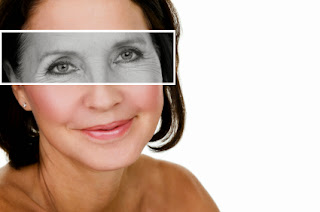One of the first eyelid surgeries
to gain attention in the medical world occurred in 1917. Walter Yeo, a
26-year-old sailor on HMS Warspite, suffered serious injuries to both the upper
and lower eyelids while manning the warship's guns during the Battle of
Jutland. Sir Harold Gillies, a man often referred to as the “father of plastic
surgery,” took skin grafts from other areas of the body and used them to create
new eyelids for Yeo.
Today, eyelid surgeries accounted for more than 34,700 of the plastic surgeries performed by AAFPRS surgeons in 2012. It's a surgery that generally takes 45 minutes to complete, though it can take longer in more extensive cases.
What Happens During Eyelid Surgery?
After the anesthesia takes effect, the surgeon makes incisions within the crease of the upper eyelid and/or along the eyelash line or inside the lid on the lower eyelid. Once the incisions are made, the surgeon is able to remove or reposition the fat, tighten muscle, and excise the excess skin. The incisions are sutured after the eyelid lift is complete.
What is the Recovery Like?
Within a few hours, you'll go home to recover. The most common complaints are swelling and bruising. Discomfort is alleviated with the pain medications your surgeon recommends. Cold compresses and resting with the head elevated help with swelling. Your eyes may feel dry and itchy, and artificial tears help with lubrication.
Within three days of the surgery, you should be able to resume light activities. Stitches are removed after five days. You do need to refrain from strenuous activities for a month.
Will Blepharoplasty Get Rid of Crow's Feet?
Blepharoplasty addresses bags and sagging skin on the upper and lower eyelids. If you have troublesome crow's feet, your facial plastic surgeon may recommend Botox Cosmetic to relax the muscle and alleviate the wrinkles and crow's feet.
What Factors Are Considered During an Eyelid Lift Consultation?
Facial plastic surgeons consider three factors when determining whether an eyelid lift is the best option. The quality and quantity of the skin is important. If skin is too thin or crepe-like, C02 laser treatments are an excellent option. Prominent fat pads on the lower lid are another factor. If there is plenty of fat, you're likely a good candidate. Finally, the surgeon looks to see how much volume loss is present in the tear trough. Again, if there is noticeable volume loss, you may be a good candidate.
How Much Does an Eyelid Surgery Cost?
It's hard to put exact figures on the cost of blepharoplasty without seeing the patient. In 2012, the American Academy of Facial Plastic and Reconstructive Surgeons placed the national average surgeon fee at $3,514. This is only the surgeon's fee. You should also expect additional fees, such as the fee charged by the anesthesiologist.
Is Eyelid Surgery the Only Option?
For folds in the upper eyelids, there is a non-surgical
option that can help fill in the loss of volume. Dr. Robert Kessler, a Newport
Beach facial plastic surgeon, can use Restylane to fill in the volume loss.
Botox is useful in alleviating drooping eyelids related to muscle loss. Read
more about Restylane on Dr. Kessler's website.
The best way to discuss your options for improving the
eyelids is by scheduling a consultation and talking to Dr. Kessler. You can
reach his Newport Beach office by calling (949) 644-6544.




